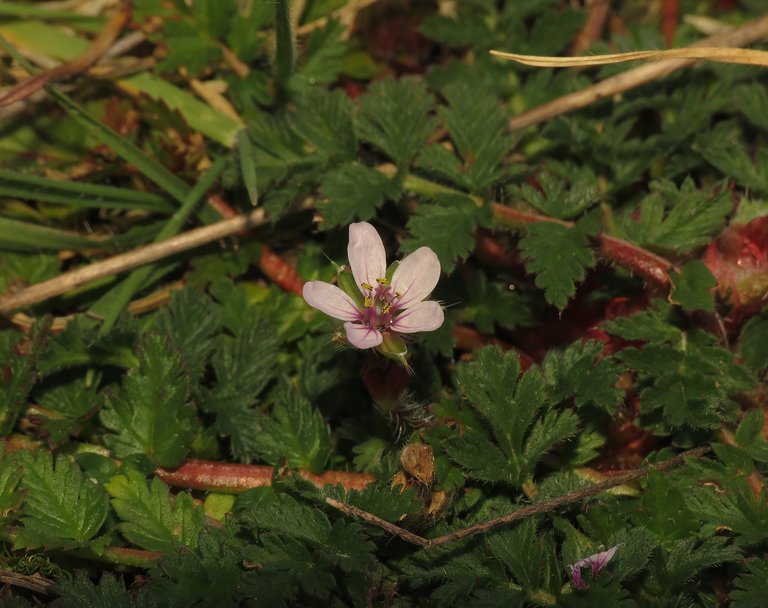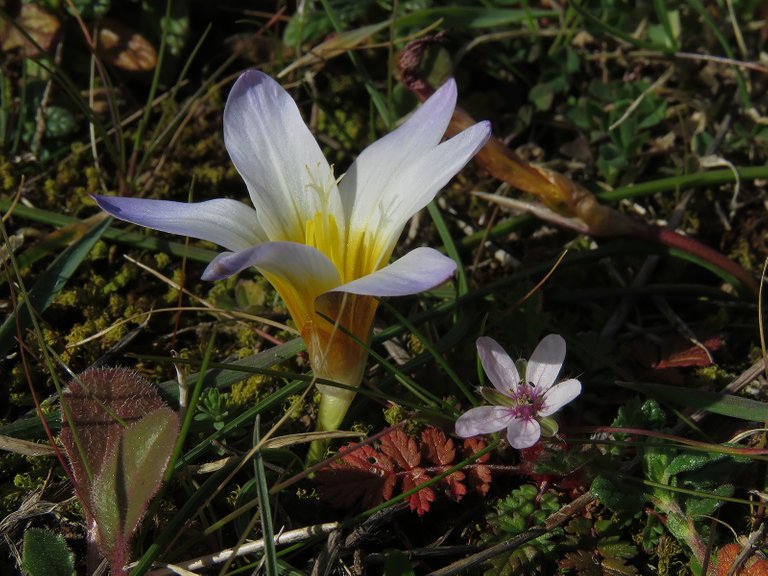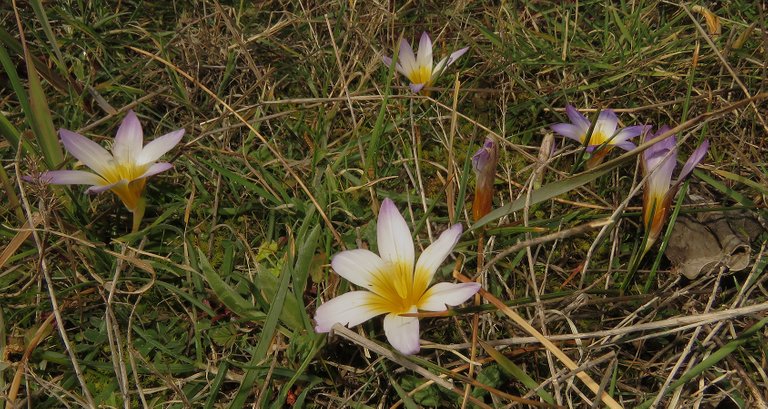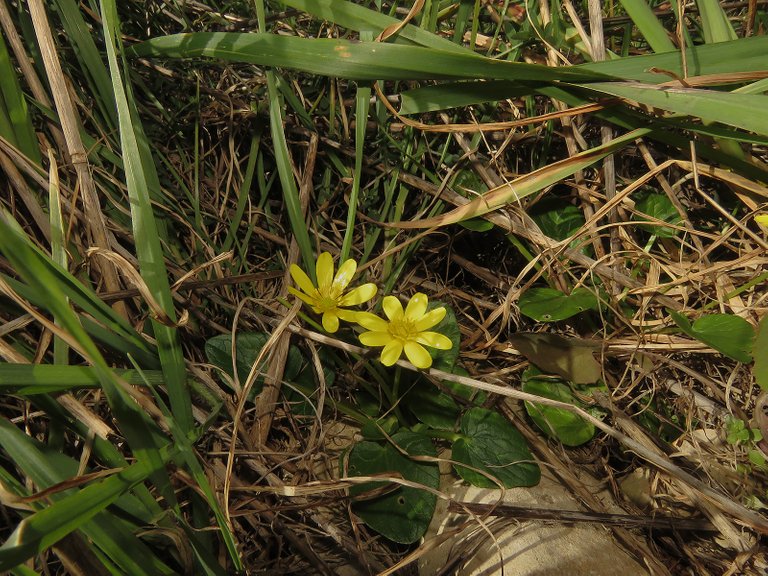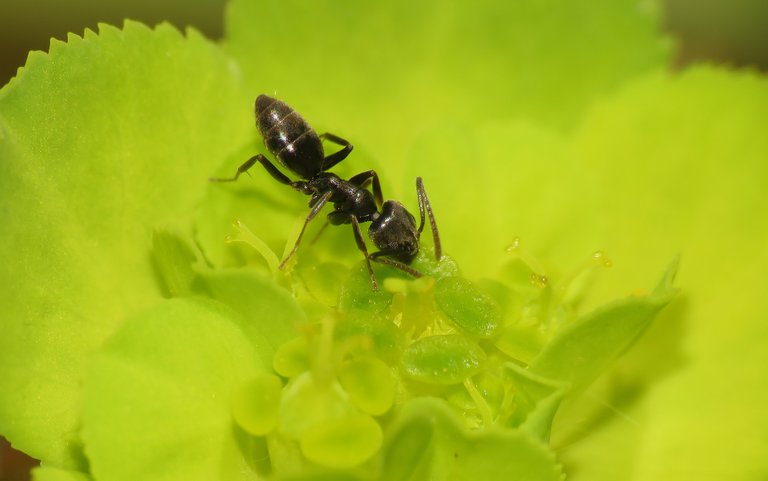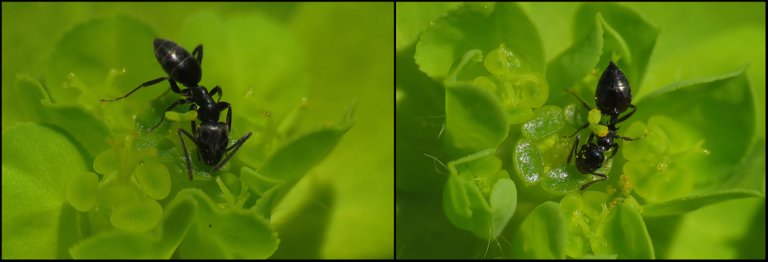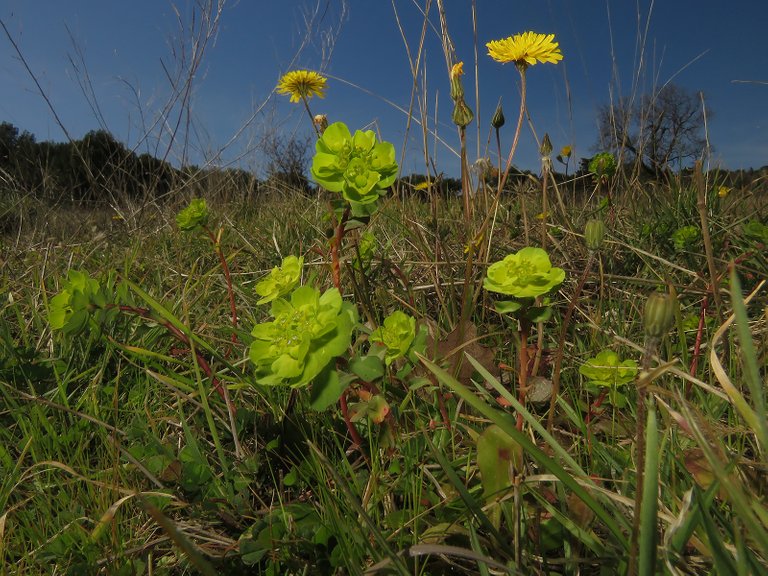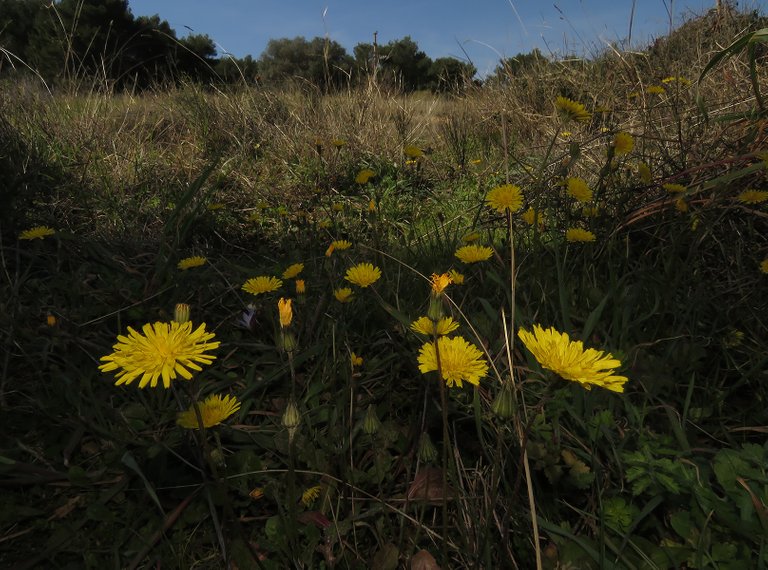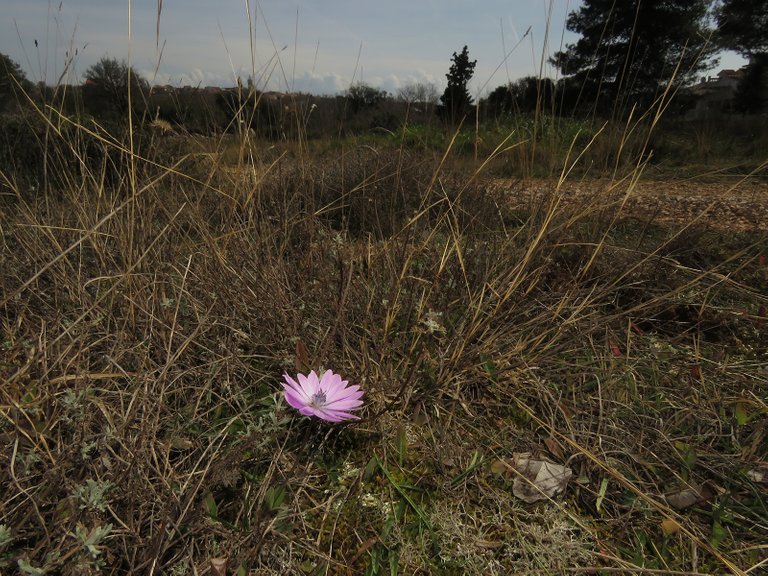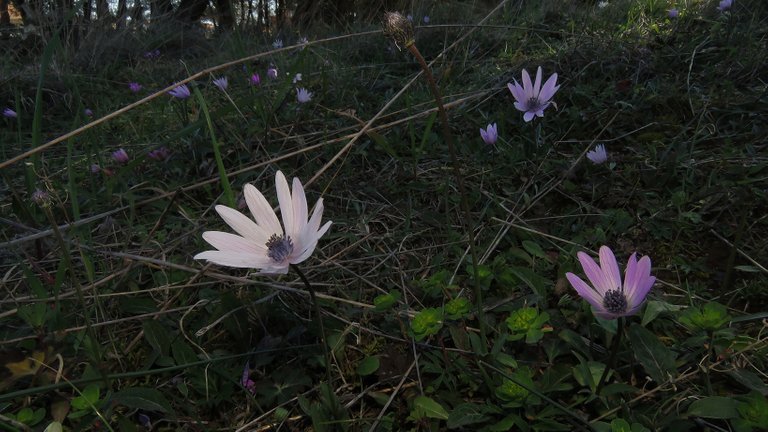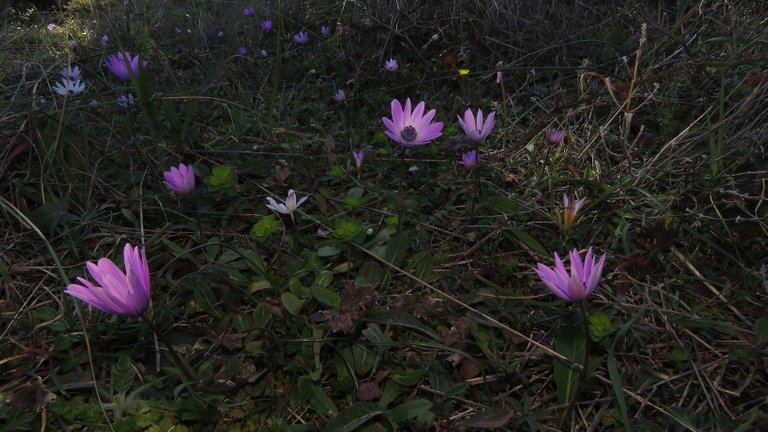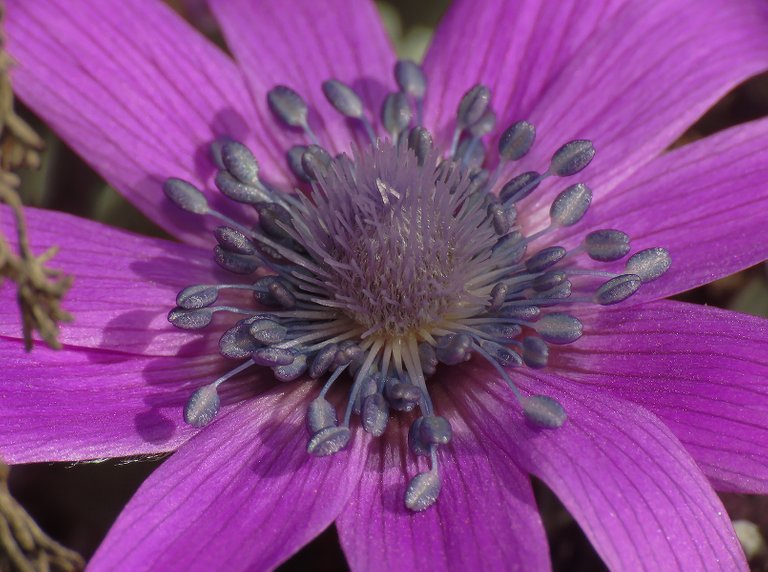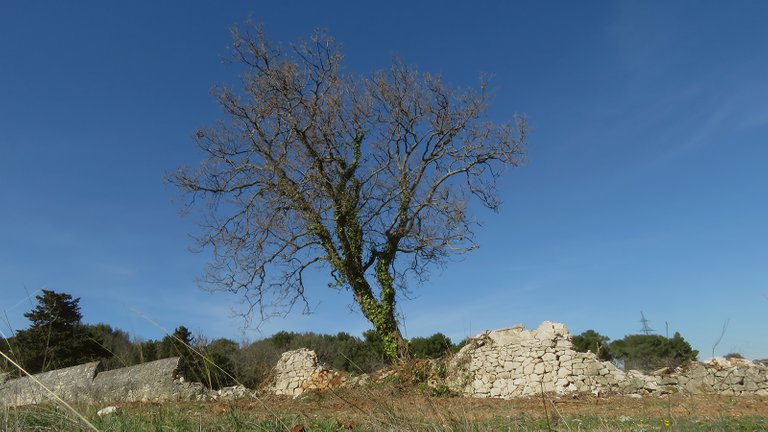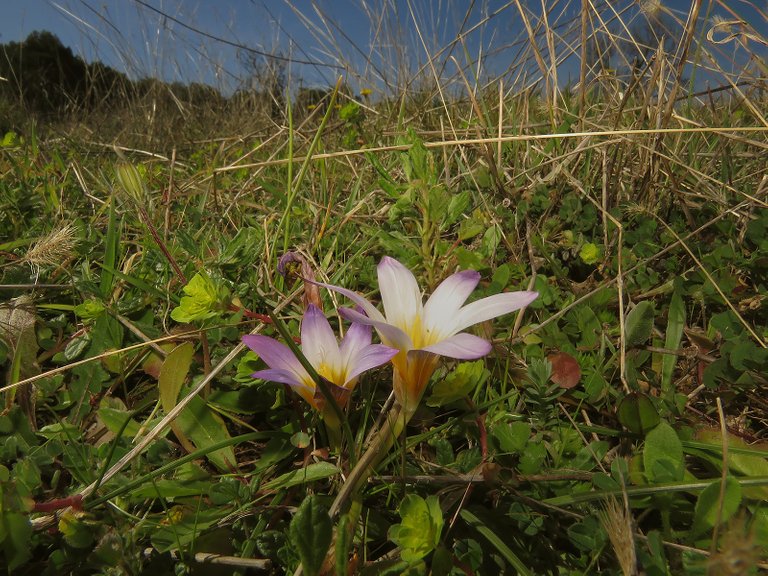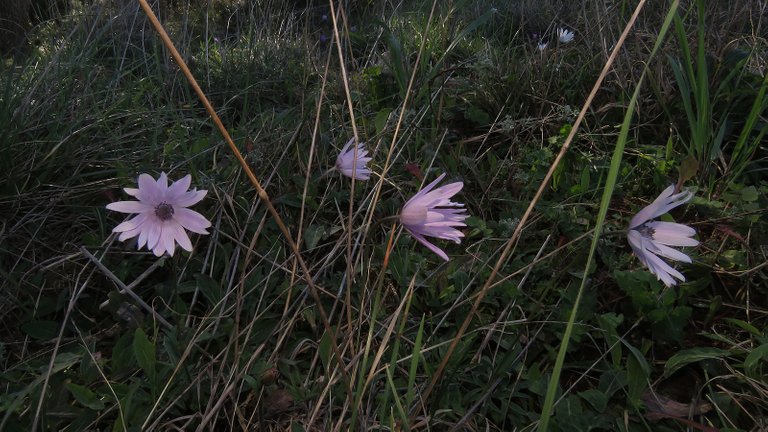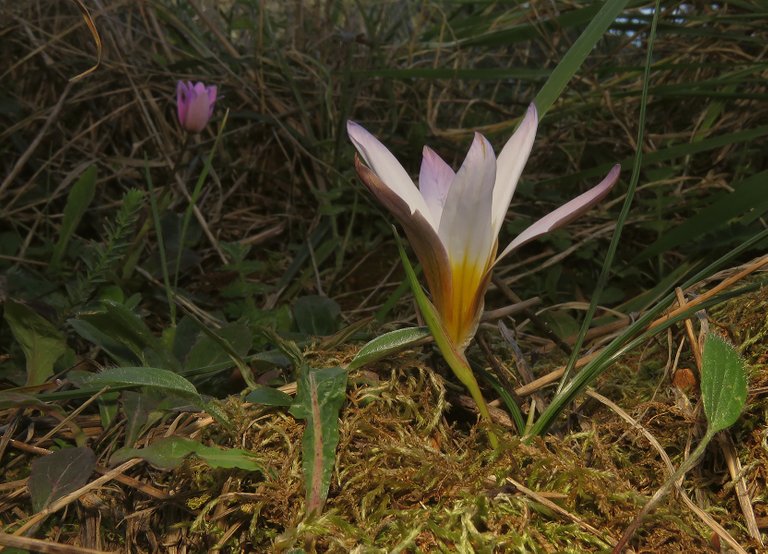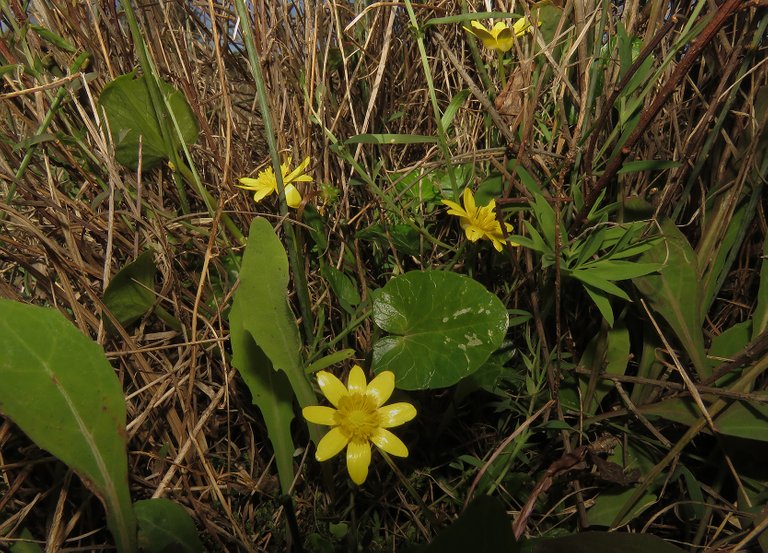Today I spent an hour or two in the area just outside my hometown. Mostly because a car repair shop of my choice is situated there, and my old car needed some routine maintenance.
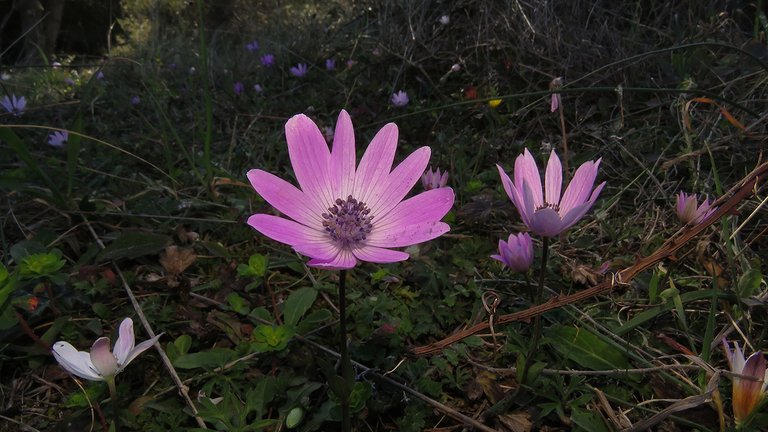
Many plants were in bloom all around me, so I had plenty of fun exploring and photographing the flowers.
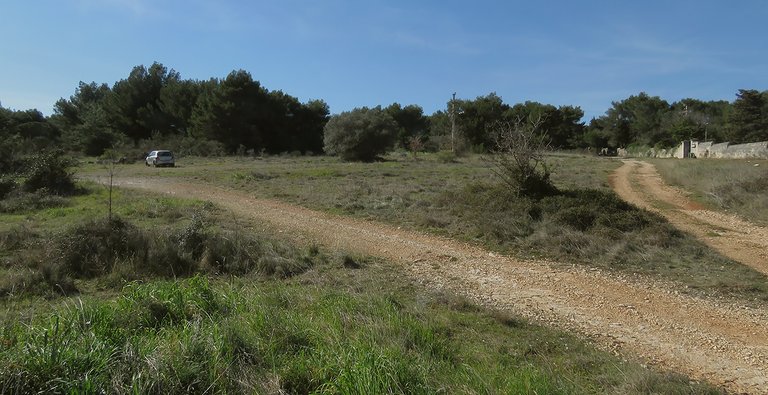
In this wide shot, you can take a look at the setting. A stretch of stony terrain in the area between Medulin, the town in which I live, and Liznjan, the nearest village that is every year closer to be merged with Medulin.
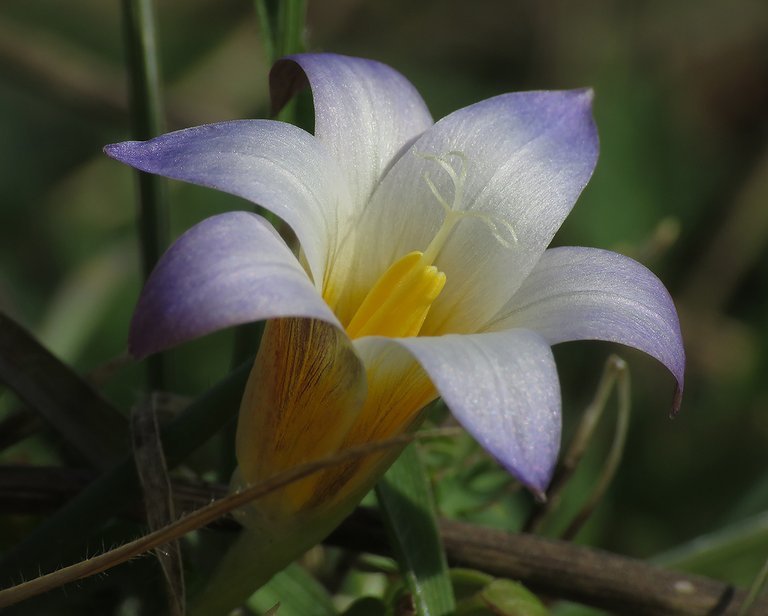
Here you can see a portrait of the Romulea bulbocodium flower. In the following photograph ...
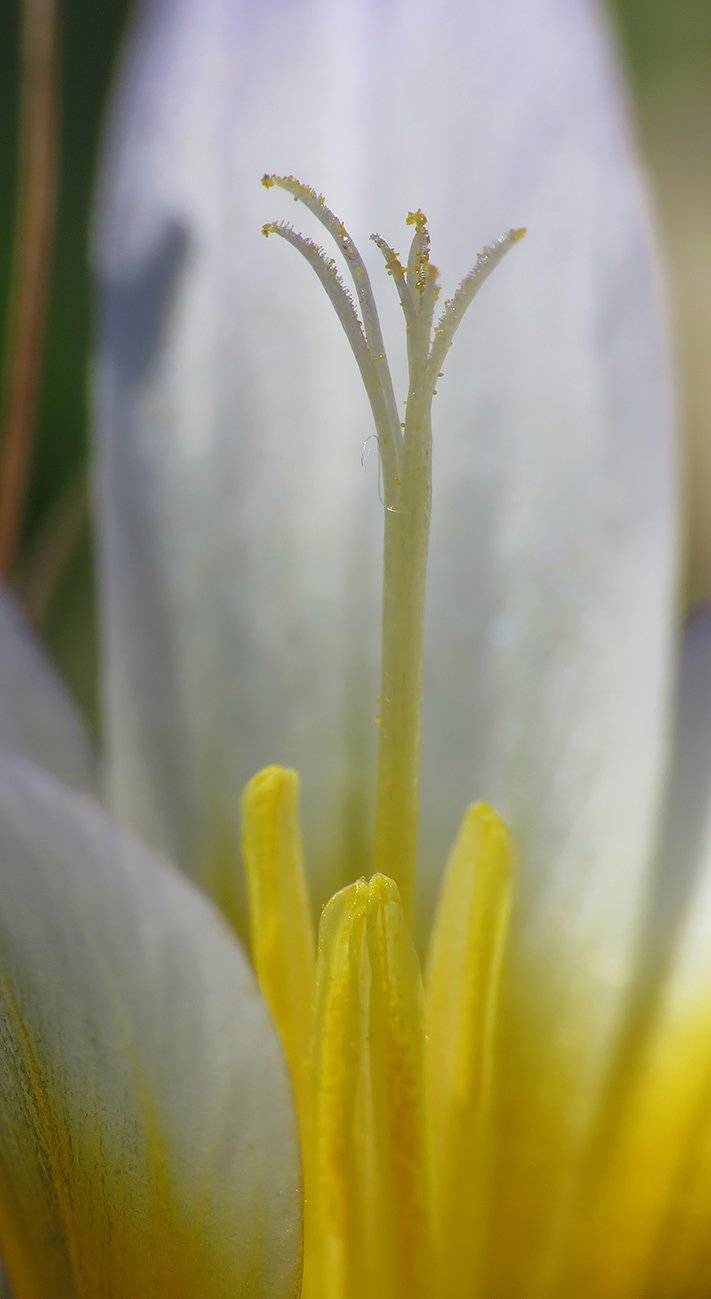
... I used the macro lens to get closer to another flower of the same kind, so you can take a good look at the pistil and anthers in its center.
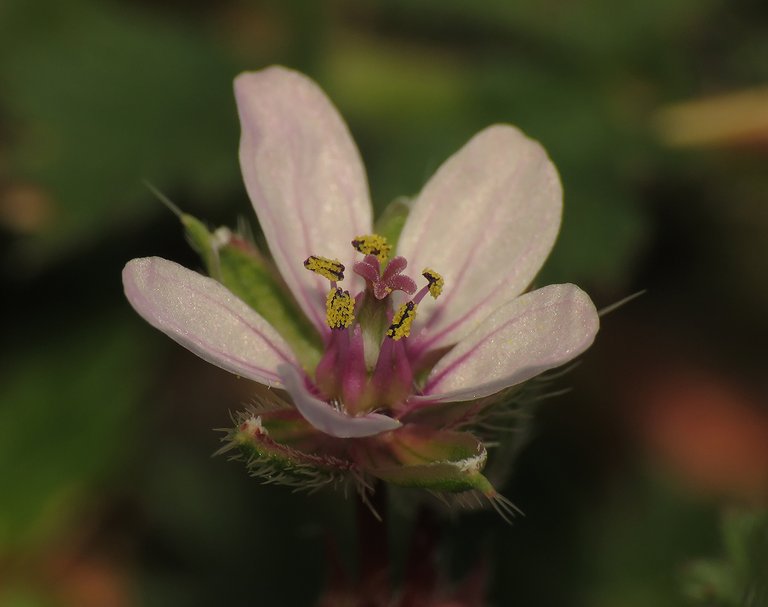
This much smaller flower ...
... belongs to the Erodium cicutarium plant. In the following photograph ...
... the two flowers are next to each other so you can easily compare them.
I photographed quite a few Romulea bulbocodium flowers today because many of them were scattered like little stars all over that sunny open area.
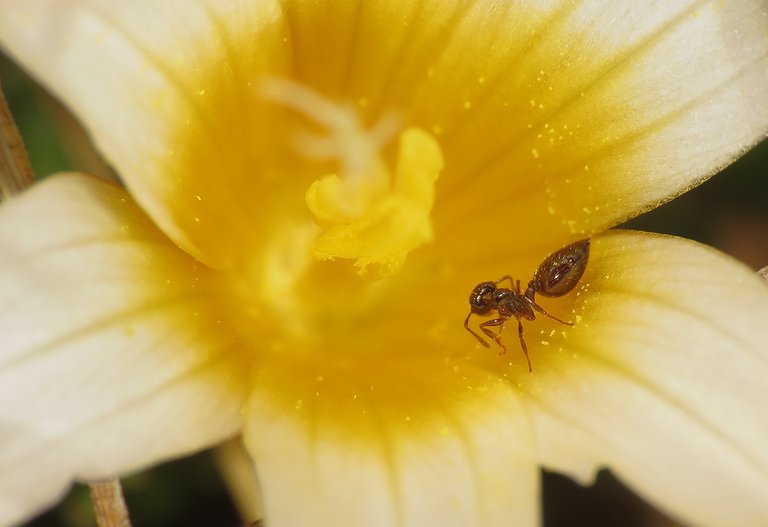
Here you can see a small Crematogaster auberti ant in one of those flowers.

In this photograph, you are looking at two lovely yellow flowers ...
... of the Ficaria verna plant. In the following shot ...
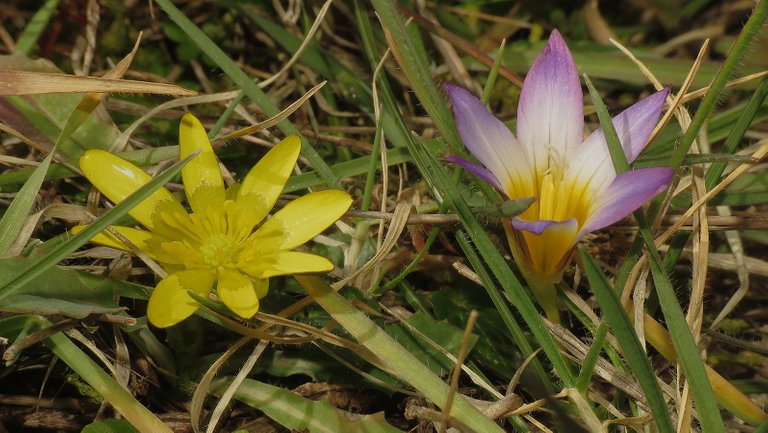
... the Ficaria verna and the Romulea bulbocodium are next to each other so you can compare the two.
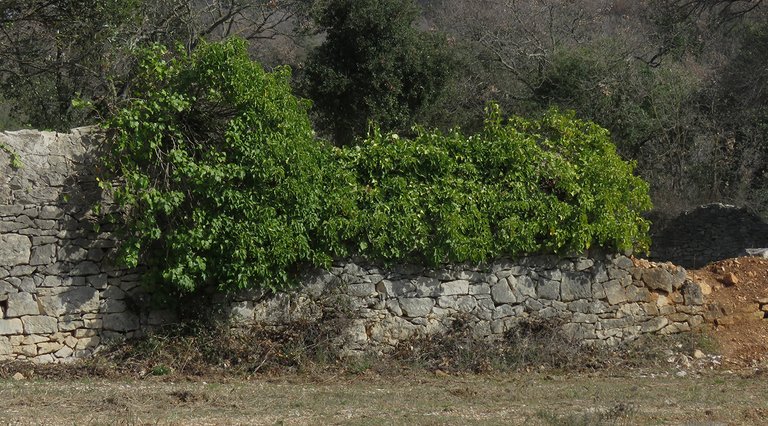
Here you can take a look at the old stone wall partially covered with ivy.
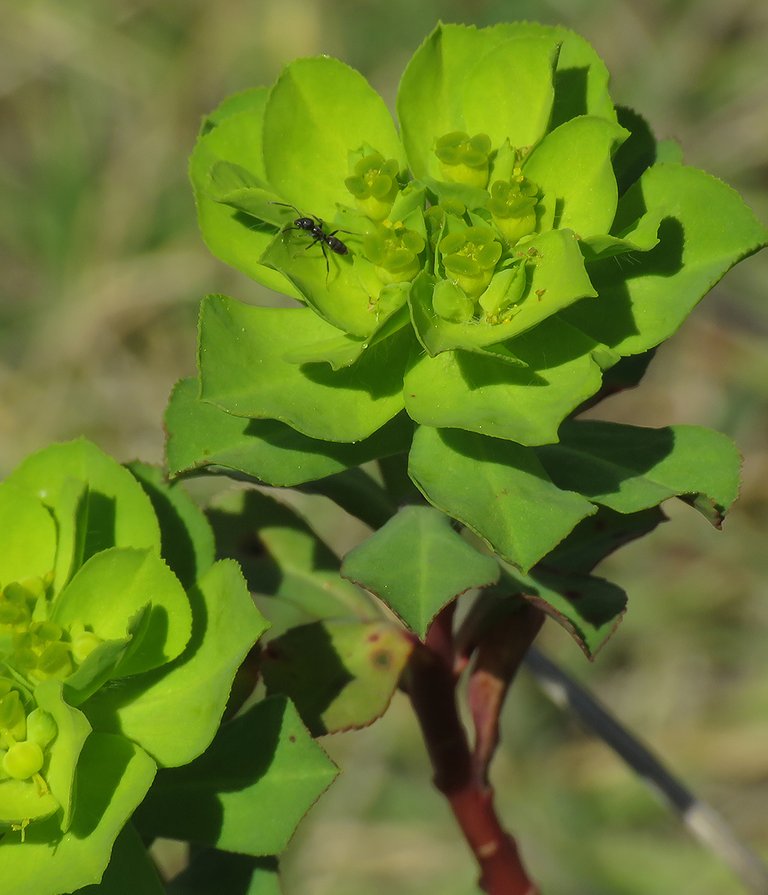
This plant is a spurge. The Euphorbia helioscopia. Commonly known as the sun spurge.
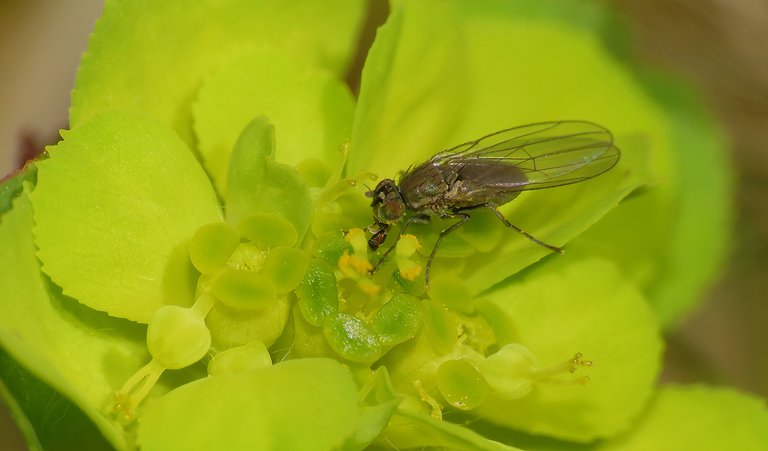
Here you can see a small fly, can't tell you the name of the species, feeding on nectar produced by the tiny green floral structures of the spurge.

The ants were also enjoying the nectar. This is a Crematogaster auberti worker.
Here you can see another species. The Tapinoma erraticum.
At first sight, from a distance, these ants look the same. Like tiny black dots in motion, basically. But a look through the macro lens reveals some noticeable differences in their anatomy.
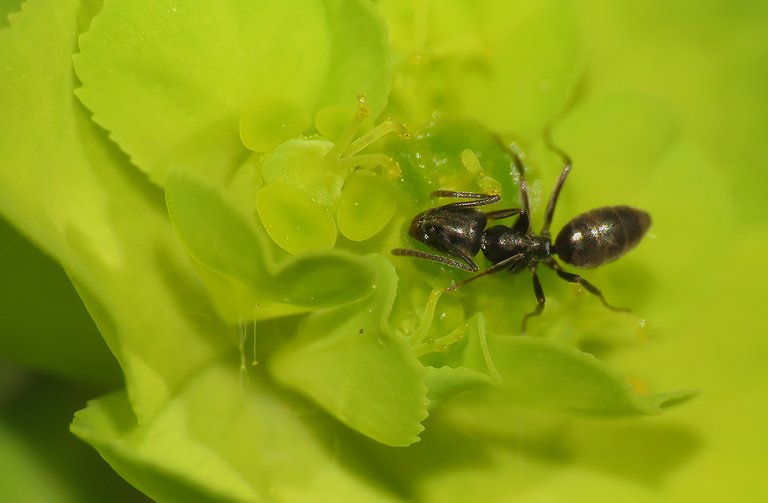
Observing the ants is a great weekend activity. Almost like birdwatching. Or collecting the shells on the seashore.
In this shot, you can see how the Euphorbia helioscopia looks in its environment.
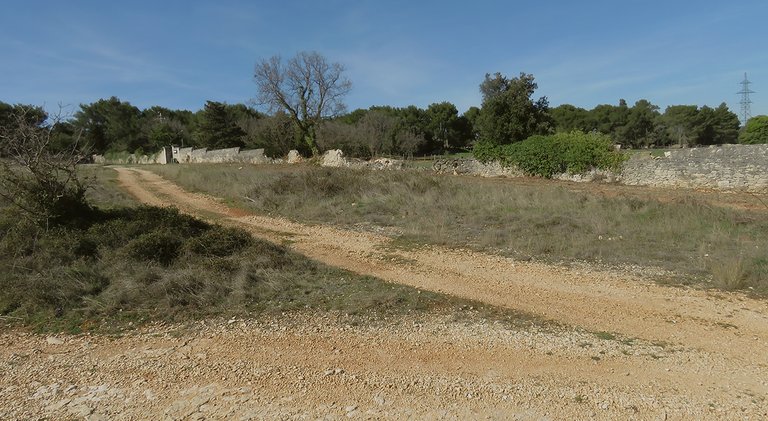
Here you can take another look at the scenery.
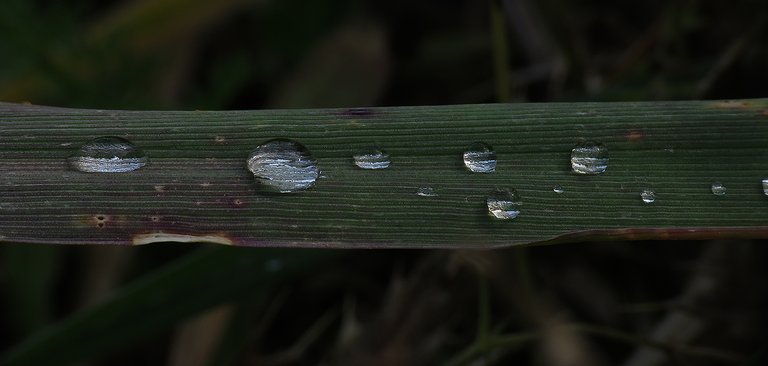
It was late in the morning but in some shady places under the trees, I found a handful of droplets, the last traces of the dew that evaporated from the terrain reached by the sun.
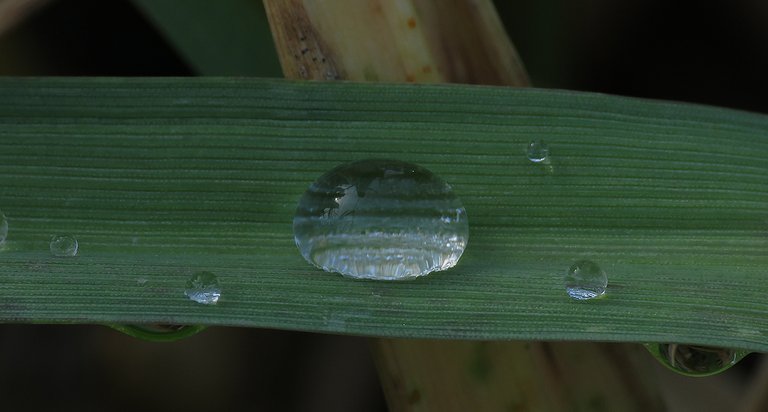
Quite a few liquid pearls were decorating the grass ...
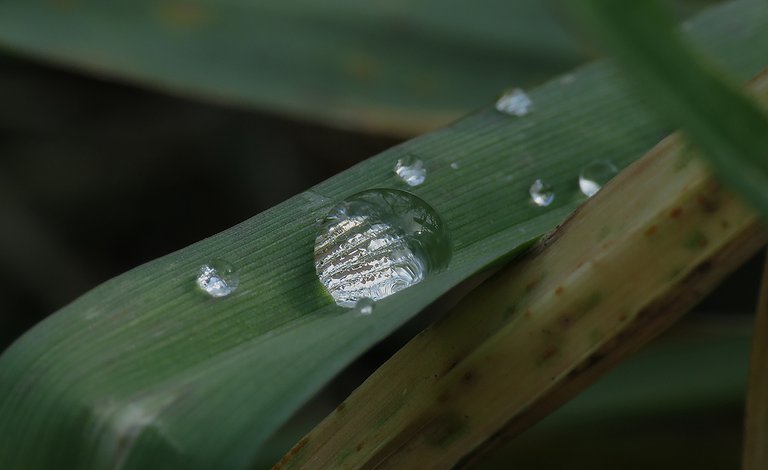
... and I collected a bunch of them ...
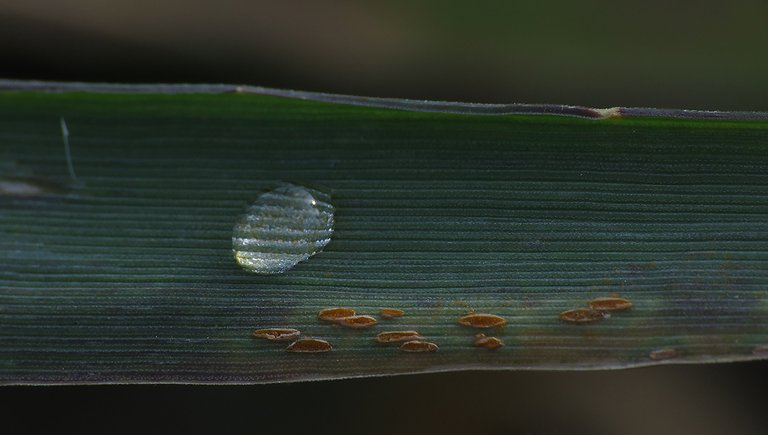
... through the lens of my camera.

These are the Pilosella caespitosa flowers.
Another yellow addition to the floral variety of this fairly colorful post.
Here you can take a look at the scenery with an Anemone hortensis flower in the foreground.
The Anemone hortensis were very numerous in some places.
Especially along the edge of a small shady pine grove.
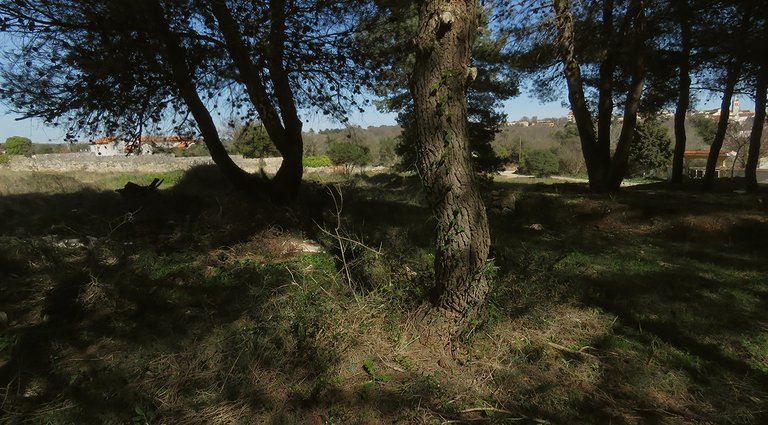
There were no flowers in the grove ...
... but its edge was nicely decorated. As you probably already noticed ...
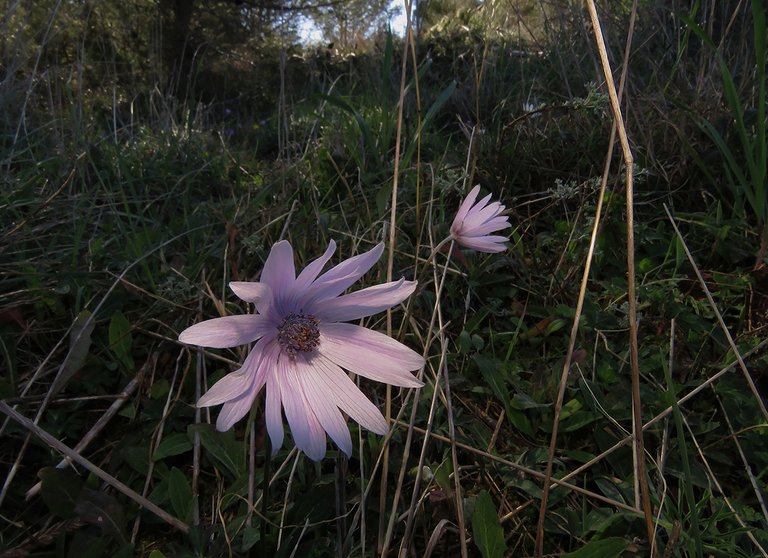
... the color in Anemone hortensis flowers can vary. They can be pretty pale or completely white ...
... but their color can also be fairly intense.
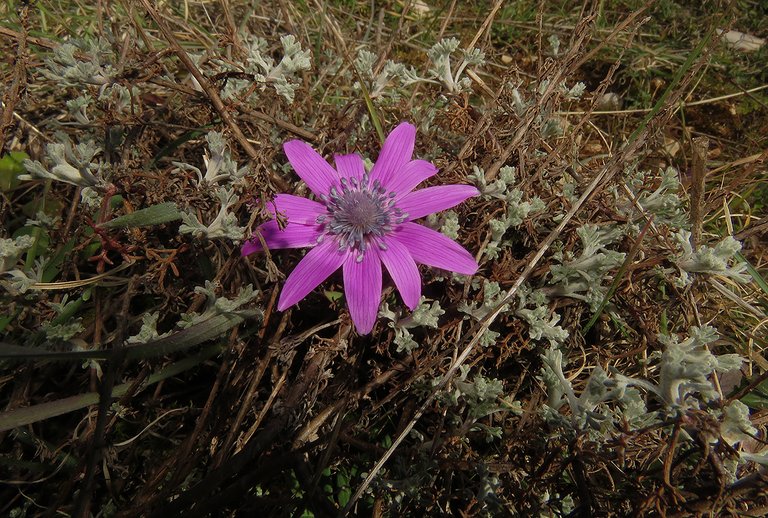
The Anemone hortensis shown in this photograph has grown surrounded by a dense growth of some small shrubs.
Here you can see the fresh new foliage growing on the dried-out branches of that plant. I wasn't able to identify the species.
Here you can see a tree with barren branches that will get new foliage two or three weeks from now. In the following photograph ...
... you can see a lovely pair of Romulea bulbocodium flowers.
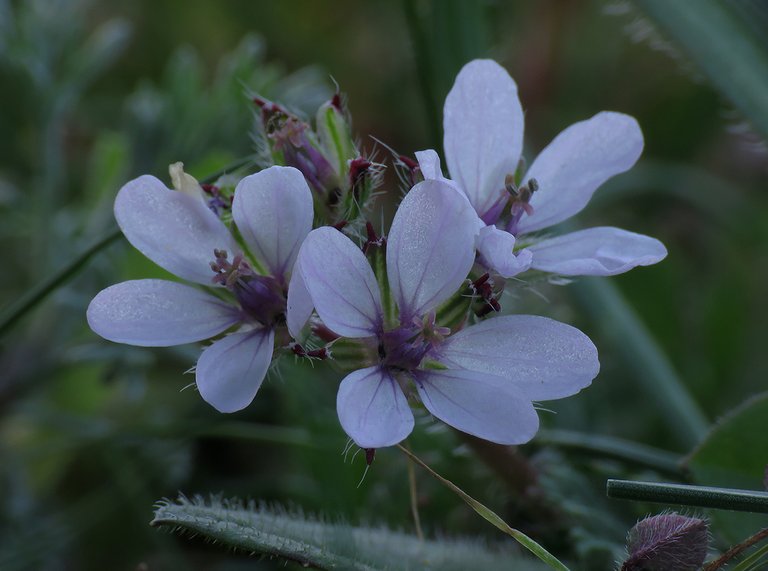
Here you can see a trio of Erodium cicutarium flowers.
This is an Anemone hortensis quartet.

Here you can take a look at the green path surrounded by pine trees and various, mostly evergreen shrubs.
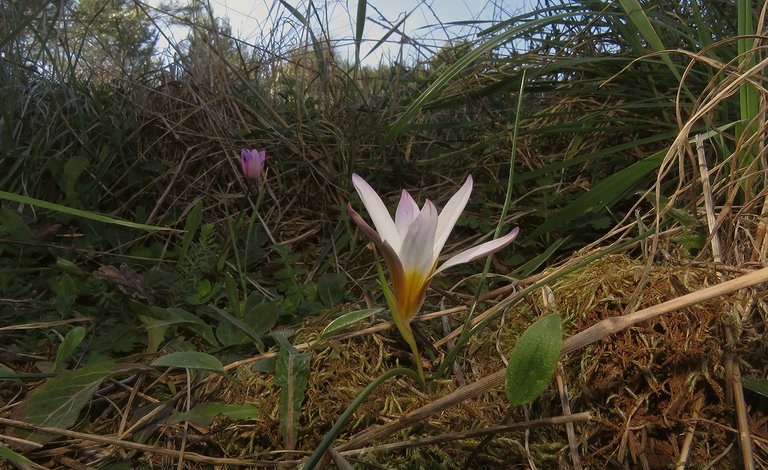
This is another Romulea bulbocodium. Maybe I exaggerated a bit with this species today ...
... but here you can admire the Romulea bulbocodium and the Anemone hortensis in the same scene. That's a new combination.
AND THAT'S IT. IN THIS LAST SHOT YOU CAN SEE A GROUP OF FICARIA VERNA FLOWERS. AS ALWAYS HERE ON HIVE, THE PHOTOGRAPHS ARE MY WORK.
The following links will take you to the sites with more information about some of the protagonists of this post. I found some stuff about them there.
https://www.plantea.com.hr/proljetna-dugovaca/
https://en.wikipedia.org/wiki/Erodium_cicutarium
https://www.antwiki.org/wiki/Crematogaster_auberti
https://en.wikipedia.org/wiki/Ficaria_verna
https://en.wikipedia.org/wiki/Euphorbia_helioscopia
https://www.antwiki.org/wiki/Tapinoma_erraticum
https://en.wikipedia.org/wiki/Pilosella_caespitosa
https://en.wikipedia.org/wiki/Anemone_hortensis
